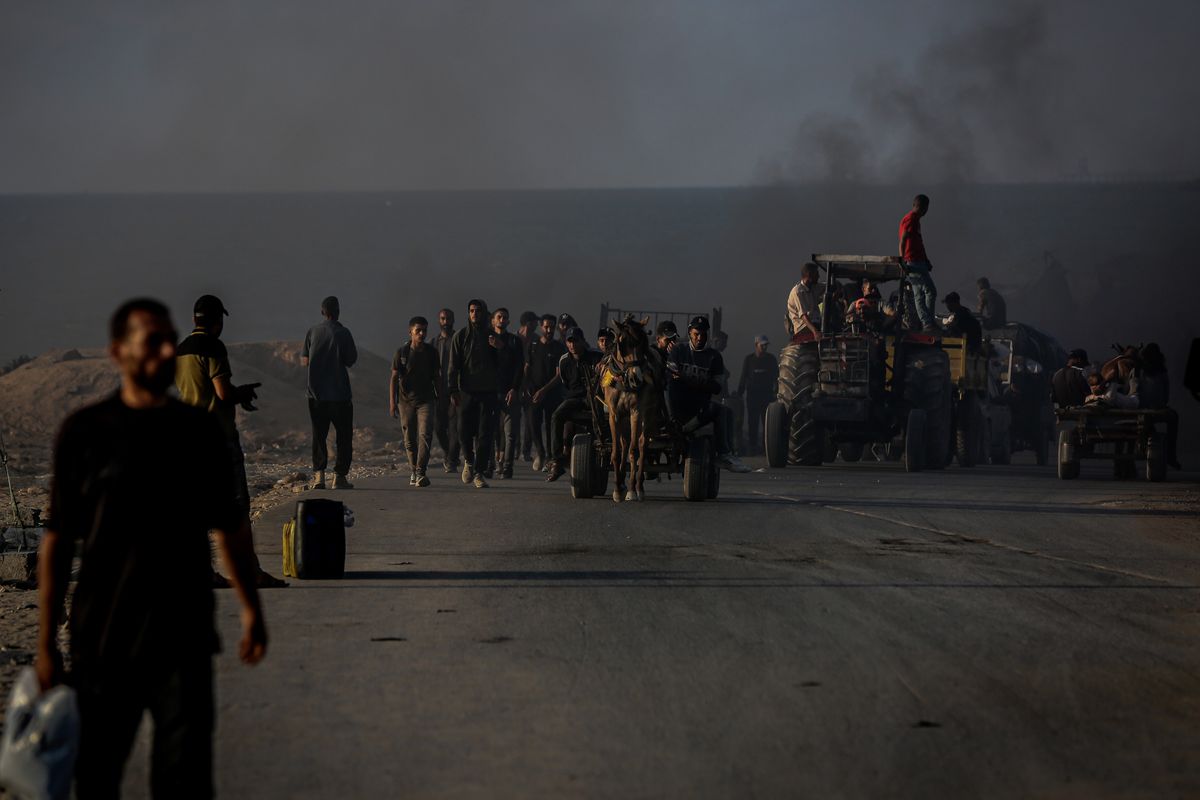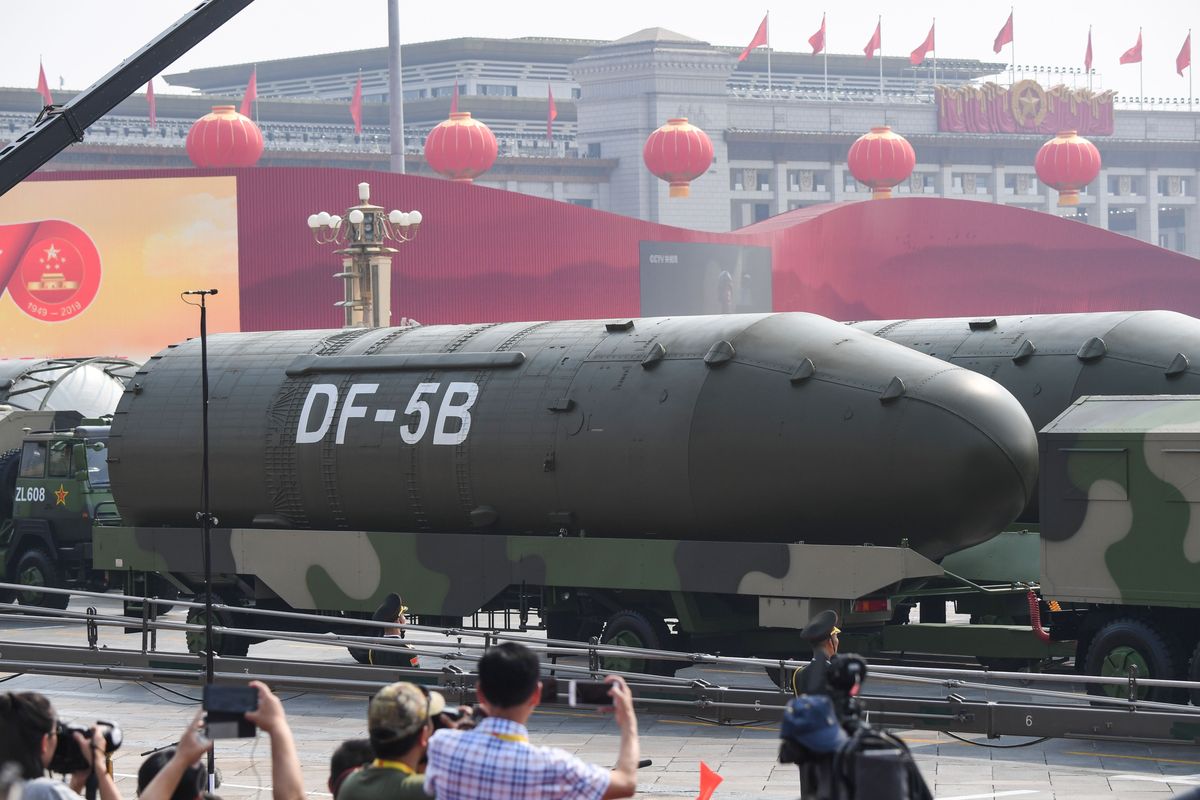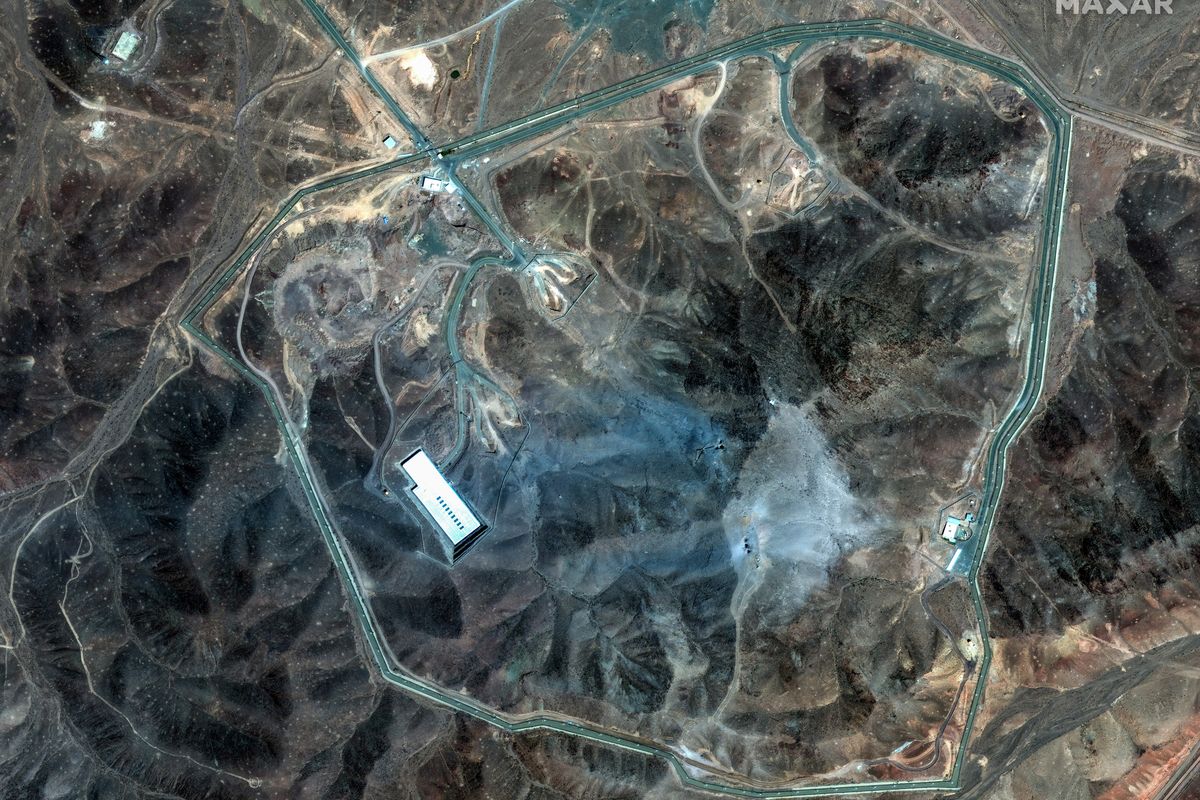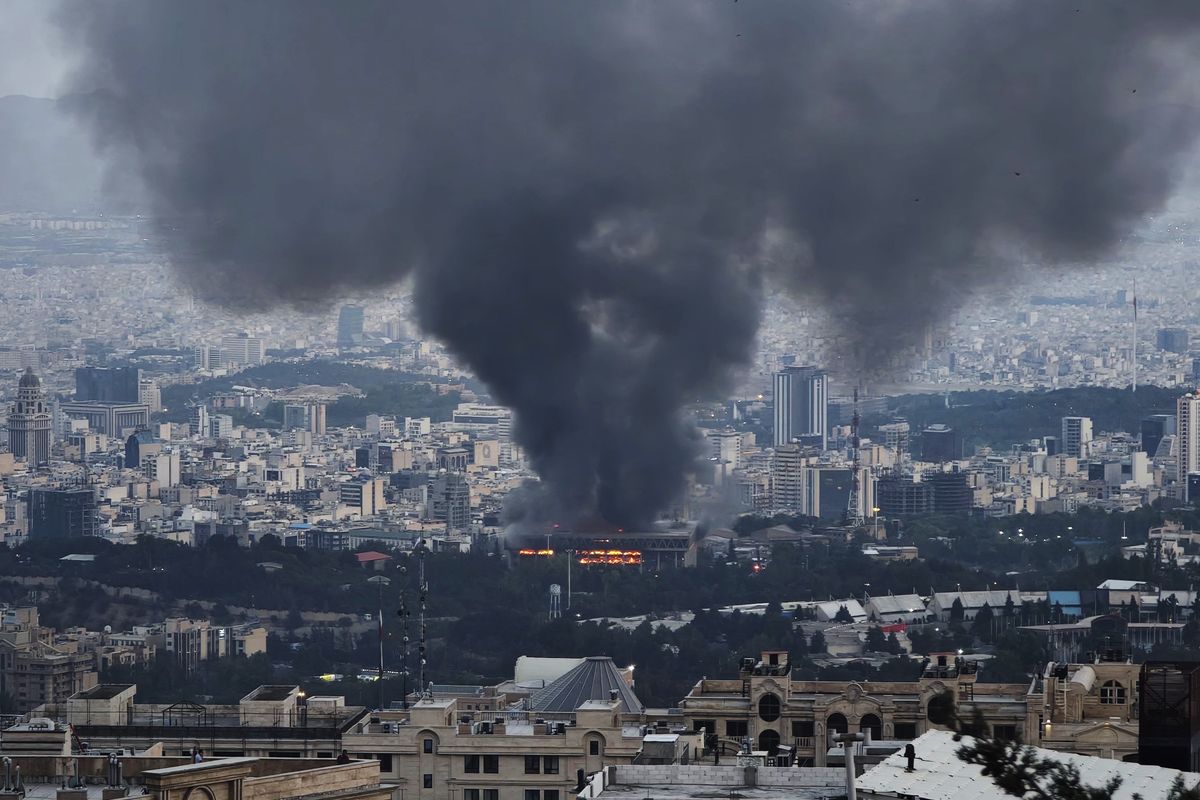OPINION — Nagasaki, Japan, was not supposed to be the target for America’s second atomic bomb that was dropped 78 years ago, this week.
And while the aftermath at Hiroshima has been widely known thanks to the book Hiroshima by John Hersey, I will use the remembrance of a the-Manhattan Project doctor who surveyed Nagasaki a month after the attack to provide yet another reminder of how deadly and destructive a single fission weapon can be, when it has the explosive power of 21 kilotons — equal to 21,000 tons of TNT.
The original target for that second bomb was Kokura, a city of 130,000, where Japan had one of its largest ordnance factories that manufactured among other things chemical weapons. The attack was to take place August 11, but weather intervened. A storm system over Japan was forecast for that time so the bombing was moved up two days.
From Tinian, an island in Marianas, the B-29 named Bock’s Car, piloted by Col. Charles W. Sweeney, was to drop “Fat Man,” the plutonium-based weapon similar to the one tested nearly a month earlier in New Mexico.
It's not just for the President anymore. Cipher Brief Subscriber+Members have access to their own Open Source Daily Brief, keeping you up to date on global events impacting national security. It pays to be a Subscriber+Member.
Bock’s Car had its own problem. Before takeoff, it was discovered a fuel transfer valve was inoperative and so fuel in one bomb-bay tank would be unavailable for the 1,500-mile trip to Japan and back. That would not be a problem for the B-29, which had a range of 5,500 miles, but this would not be a normal trip.
Instead of there being three B-29s on the mission, the photographic plane failed to make the rendezvous point, requiring Bock’s Car and the observation/instrument plane Great Artiste to circle for 45 minutes before giving up and heading for Kokura.
Arriving over Kokura, it was discovered that there was heavy ground haze and smoke. A mandatory requirement, actually set by Dr. J. Robert Oppenheimer, was that the bomb could only be dropped by visual sighting because Oppenheimer did not trust the accuracy of radar-assisted bombing.
Col. Sweeney made three bombing runs over Kokura and at no time was the aiming point seen. He then decided to go to Nagasaki, the secondary target, a port city located about 100 miles from Kokura. According to one report, Sweeney put the plane on glide to save fuel.
Nagasaki, almost surrounded by hills, had some major military facilities including the Mitsubishi Steel and Arms Works to the south, and the Mitsubishi Torpedo Works to the north. The city’s original population of 263,000 people had dropped down to some 200,000.
Clouds also obscured visibility over Nagasaki when they arrived using radar. At the last possible moment, there was a break in the clouds, just enough for the bombardier to site the target and while at 30,000 feet, the bomb was dropped and its parachutes slowed its descent.
At 11:02 a.m., while 1,650 feet above the Mitsubishi Steel Works, Fat Man detonated. Its power was 40 percent greater than the Hiroshima bomb, but the hills around Nagasaki somewhat confined the initial blast and restricted the damage. Also, by design, the fireball from the explosion did not reach the ground, thereby limiting radioactive materials from the ground being drawn up into the mushroom cloud and carried as dangerous fallout for miles around.
Sweeney, concerned about running out of fuel, circled once around the mushroom cloud and then headed toward Okinawa, 1,125 miles away. According to one report, he made it with seven gallons to spare.
The initial first-hand report I have seen from an American on the damage at Nagasaki came from Dr. Stafford L. “Staff” Warren, a Colonel in the Army Medical Corps and at the time the Chief Medical Officer of the Manhattan Project.
Two days after Nagasaki, and with the first indication the Japan would surrender, Warren received orders from Maj. Gen. Leslie Groves, manager of the Manhattan Project, to organize a survey team and o proceed by air to Guam, on then Japan, first to Hiroshima and then Nagasaki.
Stafford was to investigate radioactivity on the ground and, if it were present, to record the amounts. He was also to report on the amount of blast and other damage caused by the bomb.
Japan surrendered on September 2, and on September 8, Warren and his team arrived in Hiroshima to carry out a survey for six days. They arrived in Nagasaki on September 19, 1945, days before the American occupation troops arrived, and remained there until October 8.
In a chapter on Radiology in World War II in a 1966 publication of the Army Surgeon General’s Office called Radiology and the Atomic Bomb, Warren wrote his observations having arrived in Nagasaki 41 days after the bomb leveled much of the city.
Looking for a way to get ahead of the week in cyber and tech? Sign up for the Cyber Initiatives Group Sunday newsletter to quickly get up to speed on the biggest cyber and tech headlines and be ready for the week ahead. Sign up today.
Nagasaki lies in the Urakami Valley, which is generally narrow but is 1.5 miles wide at the detonation point. The eastern wall of the valley rises almost 2,000 feet above the valley floor. The hills were covered by terraces and rocks, and there were almost no dwellings to be damaged.
When Warren arrived, in effect the whole metropolitan area of Nagasaki had been essentially abandoned because there was nothing left there to develop any kind of activity. Even the gas tanks were ruptured, so there was no gas. The power stations had been badly bent so that they would take some considerable repair to get them back into being.
Large numbers of people had been crushed in their homes and buildings where they had been working. Skeletons could still be seen in the debris and ashes almost a mile from the blast. Some remains were placed in poorly constructed trench shelters along main roads.
Shortly after the detonation, Warren was told, large numbers of people had walked considerable distances before they collapsed and died. Many developed vomiting and bloody and watery diarrhea and died in the following two weeks. Deaths from internal injuries and burns were common.
For first aid, injured were put on mats laid on the floor. Helmets were used to carry water. As patients died in these rudimentary first aid stations, some who had survived were brought in, chiefly to take advantage of the rice and tea available there, as well as to see doctors.
Warren was told that in the first weeks, all bodies were cremated for military reasons to conceal the number of dead. As late as September 25, people were still searching for bodies.
There was almost no animal life. One dog was seen in Nagasaki, and he was a great big police dog. He wandered around for a couple of days, then vanished.
In the Nagasaki Medical School, bodies were found entangled in the twisted window frames of the laboratory wing, which faced the blast. Many fuses had apparently been replaced with metal coins, with resulting short circuits that apparently lasted long enough to set the ceiling afire in many rooms, with the further result that the contents of the rooms burned along with the bodies of the staff. Many fires apparently occurred in the city from similar short circuits. Overturned stoves caused many others.
At the approximate center of the detonation, trees, walls, and other standing objects leaned outward, spoke-like from this central point.
The wind at the time of the Nagasaki detonation carried the debris to the east where it could be traced along the roads to the ocean for 90 to 100 miles in a path at least 40 miles wide at the seashore. In the next valley, however, the fallout path crossed the north end of the reservoir that supplied the city and also the houses to the north of it. The remainder of the town south of the northern reservoir and some part of the lower Urakami Valley and the harbor area mere virtually unaffected by contamination.
Blast effects were well marked for 1.2 miles, blowing out steel frame buildings of the steel and torpedo works that ran north and south, while other stronger concrete and steel buildings had suffered obvious structural damage. Most concrete buildings had lost their steel window frames.
The water was off for quite a few days because the leaks were everywhere, so water had to be shut off between the intact and damaged areas in order to get water pressure back up. Another serious problem was with sewage. People who handled it had been killed, injured or fled so human manure just piled up leading to stench and a very bad fly problem.
Meanwhile, people did not want to go into the Nagasaki area as word got around that there could be a cholera or typhoid epidemic. At two or three tuberculosis hospitals, which were five or six miles out from Nagasaki, tuberculosis patients who could be handled elsewhere were moved in order to bring in a limited number of casualties.
The Cipher Brief hosts expert-level briefings on national security issues for Subscriber+Members that help provide context around today’s national security issues and what they mean for business. Upgrade your status to Subscriber+ today.
At a 1967 symposium, Warren looked back at his 1945 time in Nagasaki and recalled there were a few teams that came in to study the situation, “but they didn’t do anything but look,” he said. At Hiroshima it took six months or longer for people to get organized because the mayor died and most of the city officials were casualties, Warren added.
In Nagasaki, Warren figured almost 100,000 were killed or injured by one, 21 kiloton fission bomb. That that one bomb is like a drop in the ocean compared to the power resting in the thousands of fission bombs and warheads the U.S., Russia and other countries now possess or desire.
This week, it’s worth remembering what happened at Nagasaki 78 years ago.
The Cipher Brief is committed to publishing a range of perspectives on national security issues submitted by deeply experienced national security professionals.
Opinions expressed are those of the author and do not represent the views or opinions of The Cipher Brief.
Have a perspective to share based on your experience in the national security field? Send it to Editor@thecipherbrief.com for publication consideration.
Read more expert-driven national security insights, perspective and analysis in The Cipher Brief
Update: We originally reported the use of thermonuclear weapons but they were experimental fission weapons that were used in Nagasaki.










